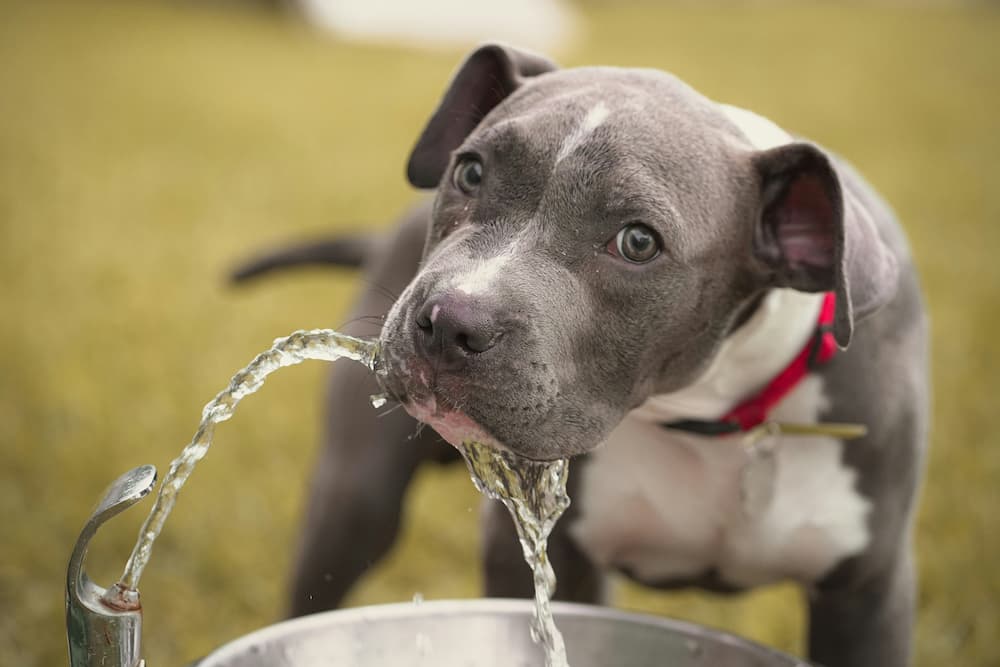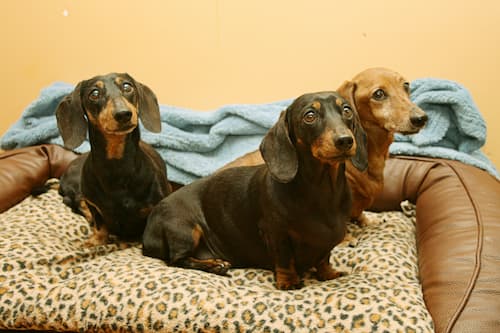As a dog owner, Few things are more frightening than seeing your dog suddenly uncomfortable, pacing, or with a swollen belly. Bloat in dogs is one of those emergencies that can go from “bad” to life-threatening in hours. This article explains—clearly and calmly—what bloat (and GDV) is, the common symptoms of bloat in dogs, how veterinarians treat it, steps for recovery, and practical ways to reduce risk so you can act fast and confidently if the unthinkable happens.
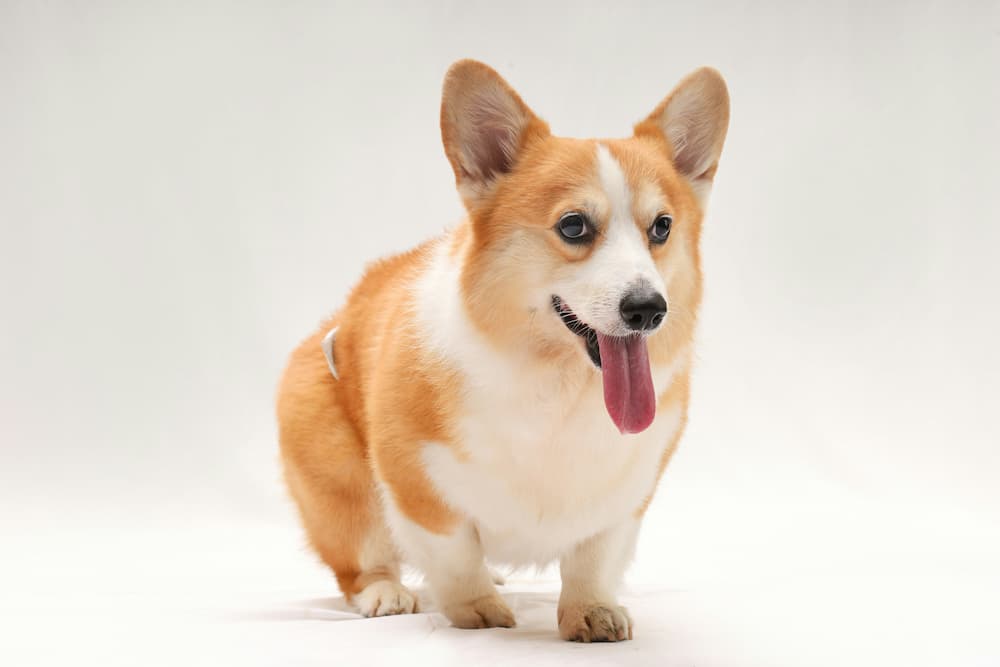
What Is Bloat (GDV) in Dogs?
“Bloat” commonly refers to a stomach that becomes distended with gas, fluid, or food. In veterinary medicine the term covers two related problems: simple gastric dilatation (the stomach swells) and the more serious gastric dilatation-volvulus (GDV), where the stomach twists on its axis. When the stomach twists, it traps contents and air, compresses major blood vessels, and rapidly causes shock and organ compromise. GDV is a surgical emergency, without immediate veterinary intervention, gastric torsion bloat in dogs is fatal. It’s most common in large, deep-chested breeds like Great Danes, but any dog can be affected.
What Causes Bloat in Dogs?
The exact trigger for bloat and GDV is not fully understood — it’s a multifactorial problem, but several risk factors are well-documented:
It’s important to note that many commonly blamed causes (e.g., hot vs. cold food, small vs. big kibble) are not strongly supported by science. Because multiple elements interact — anatomy, genetics, feeding habits, and possibly the dog’s microbiome — prevention focuses on reducing known, manageable risks rather than searching for a single “culprit.”
Signs of Bloat in Dogs
Recognizing the signs of bloat in dogs early is lifesaving. Common early and progressing signs include:
Puppies can get gastric issues too, so watch for puppy bloat signs such as sudden abdominal swelling, repeated attempts to vomit, lethargy, or collapse. Though GDV is less common in very young dogs, any puppy with an acutely swollen abdomen or severe signs needs immediate veterinary attention. Use caution: early bloat may not look dramatic — a dog that seems anxious, restless, or is repeatedly trying to vomit should raise concern.
If you suspect gastric torsion bloat in dogs (GDV), call your veterinarian or an emergency clinic right away and describe the signs; they may advise you to bring your dog immediately. Time matters — delays can reduce survival odds because blood flow to the abdomen and heart becomes compromised.
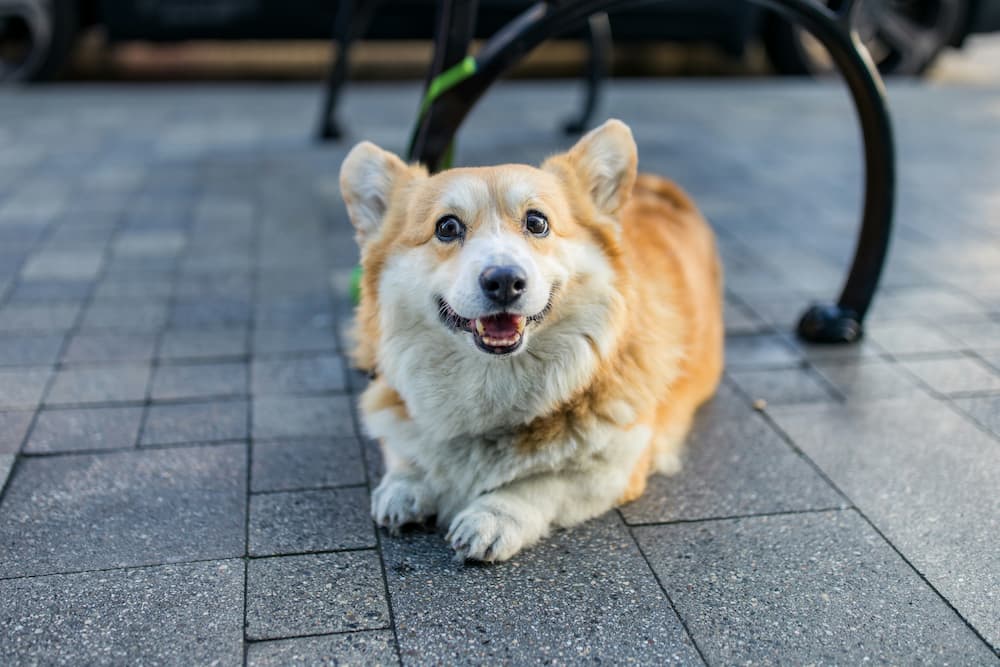
Treatment of Bloat in Dogs
Treatment depends on whether the stomach has simply dilated or also twisted (GDV). In all cases, stabilization is the first priority: oxygen, intravenous (IV) fluids to support blood pressure, pain control, and attempts to decompress the stomach. A stomach tube or trocar may be used to release gas if feasible. X-rays confirm whether the stomach is twisted.
If GDV (torsion) is present, surgery is typically required to untwist the stomach, assess tissue viability, remove any necrotic sections, and perform a gastropexy (tacking the stomach to the body wall) to reduce recurrence. Even after successful surgery, postoperative monitoring is critical because heart rhythm abnormalities and systemic complications are common. Survival rates vary with time to treatment, age, and how much stomach tissue was damaged, but prompt, experienced emergency care significantly improves outcomes.
For dogs with simple dilatation (no twist), some cases can be managed non-surgically with decompression, fluids, and observation — but many veterinarians strongly recommend prophylactic gastropexy for high-risk breeds because of the potential for recurrence and sudden progression to GDV. Discuss options with your vet.
Recovery of Bloat in Dogs
Recovery depends on severity and whether surgery was needed. After GDV surgery, most dogs stay hospitalized for 24–72+ hours for IV fluids, pain control, antibiotics as needed, and monitoring (including heart rhythm checks). Activity is restricted during the healing period; owners are given a stepwise plan for wound care, pain medication, and gradually increasing activity.
Complications can include cardiac arrhythmias, infection, or partial stomach necrosis requiring further surgery. Long-term recovery is often good if GDV is caught early and treated; dogs typically return to normal quality of life once healed. For dogs that had a gastropexy, the risk of recurrence is greatly reduced, though owners should still follow feeding and exercise best practices. Clear communication with your veterinary team and following discharge instructions closely are essential to a successful recovery.
How to Prevent Bloat in the Future?
No prevention strategy is 100% effective because the condition is multifactorial, but practical steps lower risk:
Also keep fresh water available but avoid forced water restriction; dogs may drink heavily and this can be a risk when combined with other factors — managing meal size and timing is usually safer. Work with your veterinarian to build a prevention plan tailored to your dog’s breed, age, and medical history.
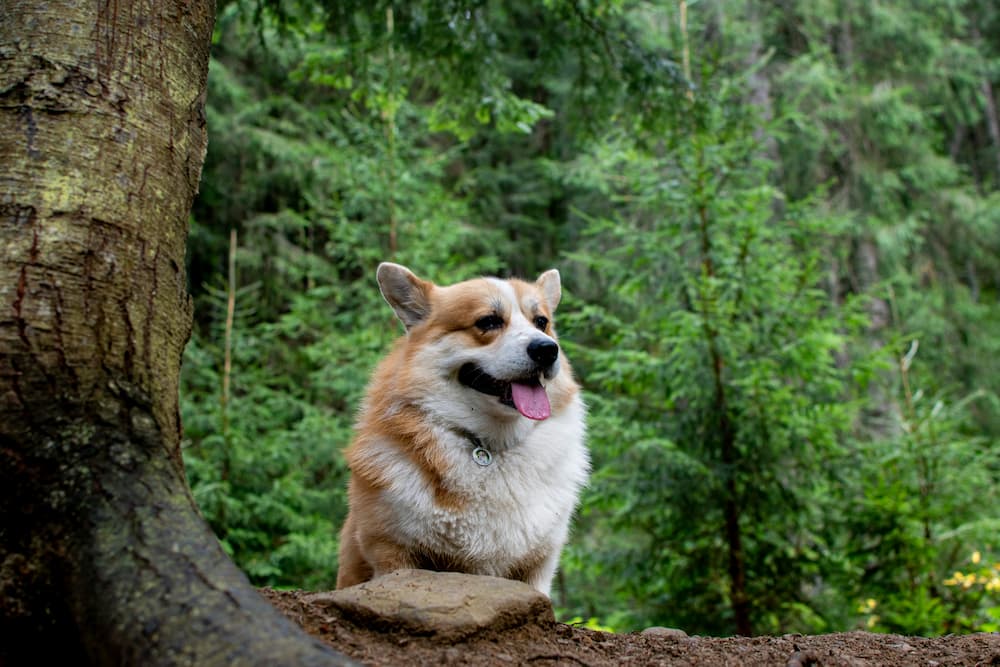
Conclusion
Bloat in dogs and GDV are scary but well-understood emergencies. Fast recognition of signs of bloat in dogs, immediate veterinary contact, and prompt treatment are the best ways to save a dog’s life. For owners of deep-chested breeds or dogs with other risk factors, preventive steps — from feeding changes to surgical gastropexy — can meaningfully reduce risk. Keep emergency numbers handy, learn the signs (unproductive retching, swollen abdomen, restlessness), and partner with your veterinarian to make a practical, breed-specific prevention plan.
FAQ
What breeds are most at risk of bloat (GDV)?
Large, deep-chested breeds have the highest risk — examples include Great Danes, Weimaraners, St. Bernards, Gordon setters, Irish setters, Rottweilers, and Standard Poodles. Breed, genetics, and body conformation are key risk factors, though any dog can develop bloat.
Can feeding habits help prevent bloat?
Yes. Feeding two to three smaller meals a day instead of one large meal and using a slow-feed bowl to prevent rapid eating are two of the most effective ways to reduce risk. Avoid exercising your dog immediately before or after meals.
Will a dog with bloat drink water?
A dog with bloat may refuse water, drink excessively, or repeatedly attempt to drink without calming symptoms — there’s no single pattern. The critical point is behavior change: if drinking is accompanied by abdominal swelling, restlessness, repeated unproductive retching, or other concerning signs, seek emergency care. Don’t wait to see if the problem resolves.

